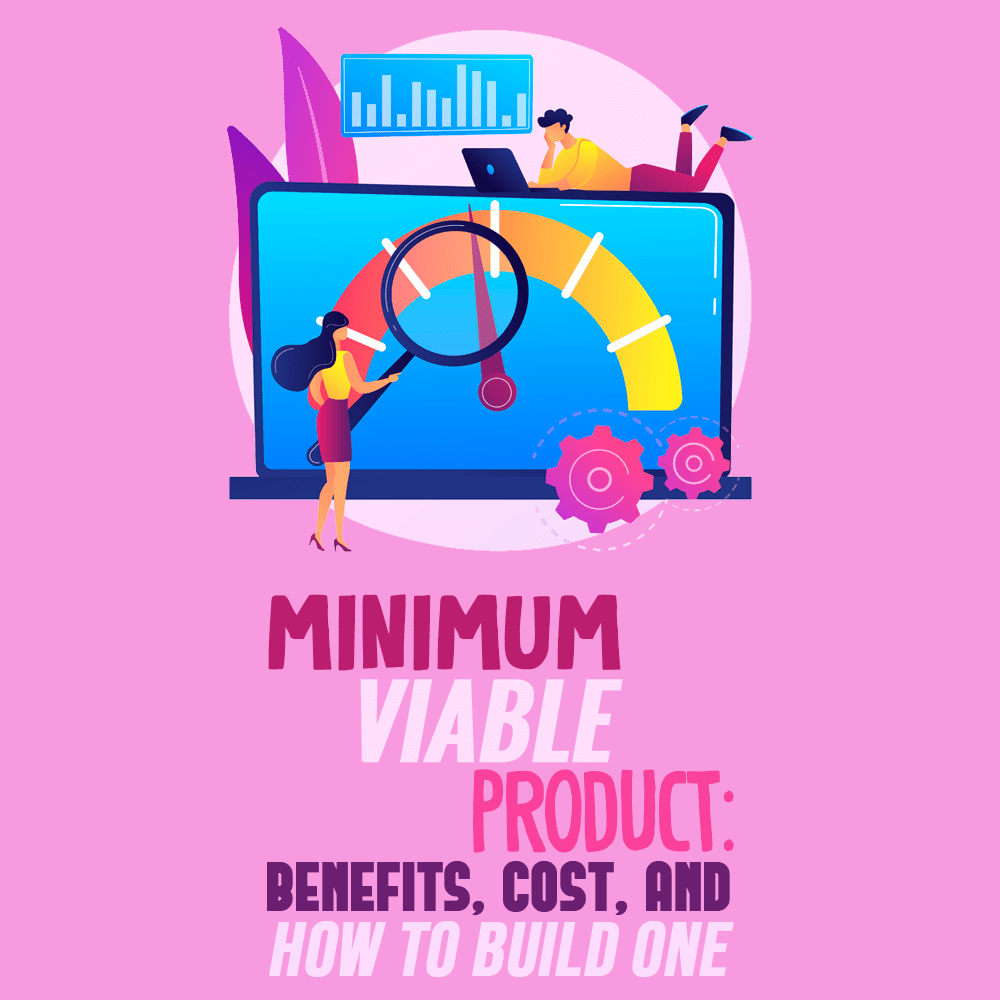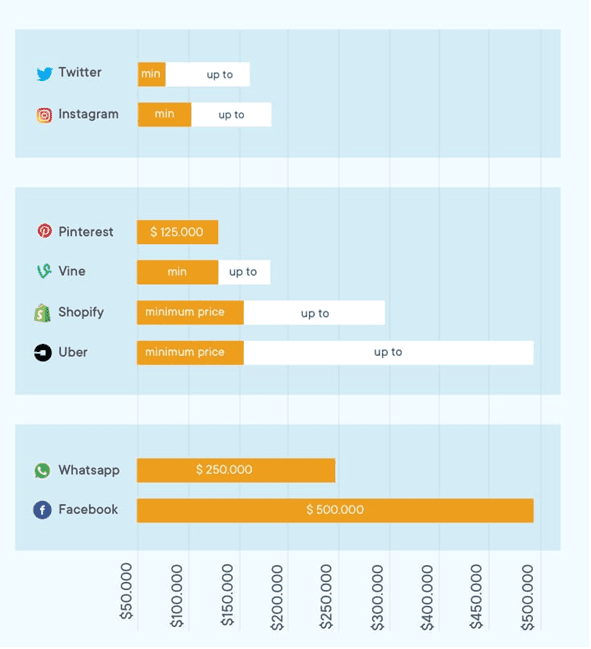 A minimum viable product or MVP is a concept to denote testing of a product with minimum resources spent. The testable product includes enough features to attract early adopters, and the aim is to collect feedback from these customers in order to improve the final product.
A minimum viable product or MVP is a concept to denote testing of a product with minimum resources spent. The testable product includes enough features to attract early adopters, and the aim is to collect feedback from these customers in order to improve the final product.
The MVP development includes the following steps:
- Produce the basic version of the product.
- Release the product in the market.
- Collect information from early adopters.
- Improve the product based on feedback.
- Roll out a new version with improvements suggested.
Overall, launching an MVP is less risky and costly than scaling up without initial testing. Such an approach has lots of benefits, such as a better understanding of customer needs and development with minimum risks. You may even be able to sell your app idea without launching the product.
At this point you might wonder, isn’t an MVP a waste of resources? Research shows that it is not. According to Go-Globe, more than half of startups fail due to premature scaling. Isn’t that scary? Failure happens in part because developers don’t do the groundwork before releasing their final product.
And so, whether you want to or not, you need to do market research before you release your final product. Here is where MVP comes in handy.
How do you build a minimum viable product in 2022? In this article, you will get an answer to this question with a clear vision of what to do. Your curiosity on “how much does it cost to build an MVP” will also be satisfied, so go ahead and see why and how to build one.
Building a minimum viable product requires market research, feedback from early users, and the ability to adapt when creating the final product. Let’s dive in to see exactly how the process works.
Main Benefits of Building an MVP
As we saw, any kind of investment in developing an MVP, in time or money, is definitely worth it. Let’s see its multiple benefits in more detail.
Clear Vision
You need to have a clear vision of the basic functionalities of your product or service. To have a clear understanding of what you really want to do takes a lot of research and teamwork.
Make a checklist and share that with the team. You need to go through each item and try to bring a new say to the market with less cost and higher efficiency. After you are clear about the basic functionalities, you may develop the prototype.
A Better Understanding of Customer Needs
What can be more beneficial for you than understanding your customer needs (a great resource to help you in this effort is The Lean Product Playbook)? And what can yield more profit to you than customer feedback at the early stages of development?
Understanding your customer needs is the apple core of any development process. After you build a prototype and release that in the market, you are ready to collect valuable feedback. Make sure to leave channels of feedback open for a later analysis process.
Quick Release
Because you focus on key functionalities and not all features, the release is quicker. This allows you to concentrate on the main features and see how they work in the real world.
Development With Minimum Cost or Risk
Scaling up without initial testing is the cause of the failure of many startups. They just spend too much money without knowing whether it will work or not. With small-scale development and release, companies don’t risk high-dollar or time. They do everything with minimum risk involved.
Improved Final Product
An MVP allows you to collect valuable feedback from early adopters. This information is later thoroughly analyzed with the aim to strengthen the strong points and eliminate the weak points. Feedback plus analysis is at the core of an MVP. The final product is tested in the real world and is adapted to customer needs and wants.
How Do You Create an MVP?
Here are the six steps you need to take in order to create an MVP.
1. Research the Idea

So, how to do research? First, you can study similar experiences of your competitors:
- What do they do right?
- What do they do wrong?
- Why are some successful and some not?
These are questions you need to answer. The internet is a valuable resource for doing market analysis, but you may also want to do individual studies, like surveys. Yes, it costs money, but you cannot risk the whole business just by ignoring something that may not be so obvious.
2. Define Market Demand
You need to answer these questions:
- Why would customers want my product?
- What value does it add to the existing brands?
- How is my product different, and what does it mean for a potential client?
- What problem am I solving?
Once you are clear about these questions, you will have a clearer idea about your own product or service.
3. Define Must-Have Features
Your app or product may have lots of features, but at this stage, you need to prioritize only must-have features. Why? Simply because you don’t want to spend lots of money and time on MVP development only. Besides, if there is a market demand for basic features, some nice-to-have features will only add a flavor to your product.
4. Build and Launch
You need a qualified team to build your prototype, even at the stage of the MVP. The product released during the stage of the MVP should meet all the requirements of a quality product, i.e., a product that the customer wants and needs.
To find an experienced team that will not let you down is not easy, either. It also takes research and analysis. One way is to consider reviews about the software development agencies that you will find on rating agencies like GoodFirms. Another option is to search on LinkedIn.
5. Collect Feedback
The primary goal of an MVP is to collect feedback from early adopters. Make sure to have channels of feedback open. For example, you may get feedback on social media, from your friends, or by contacting customers for their reviews. If you choose the latter option, you somehow need to keep in touch with those who use your product. One way is to leave your contact details and ask for feedback.
Alternatively, you can collect the contact information of early adopters at the sale points, saying that you would like to do a survey on product satisfaction. Here are some of the questions you may want to ask during the survey:
- Has our product met your expectations? If not, why?
- Is there anything that concerns you?
- What changed after you first started using our product?
- Are you happy with the cost/value ratio?
- What can we improve to make you happier with our product?
- WIll you recommend our product to your friends?
- Has our product helped you solve a specific problem you wanted to solve? If yes, how? If not, why?
6. Analyze Feedback
Now that you have all the information about your product or service, it’s time to analyze it. Every opinion counts, as the reviews you get will determine the success or failure of your business. Make sure to think over every idea that you get and try to find the golden medium between your budget and what customers want.
During the analysis, you can consider both qualitative and quantitative data. While quantitative data gives you a good hint on how successful your product may be in numbers, it is the qualitative data that answers the questions “how,” “why,” and “when.” Therefore, give your customers a chance to explain what they mean, and make sure to have enough qualitative data at hand.
How Much Does an MVP Cost?
Now we come to the core question. Your budget is of course not unlimited, and you want to spend as little as possible. However, restraints may cause the failure of the whole business. Therefore, find a qualified team to outsource your app or product prototype.
OK, then, let’s get to numbers. To be honest, there is no single answer to the question “how much does it cost to build an MVP?” However, if you want to have a rough idea of what to expect money-wise, here is what to consider.
If you hire a freelancer, you may end up paying something like $5,000 to $15,000.
Outsourcing to a development team may, on average, cost $30 per hour in Eastern Europe, for example. If you hire four people, you will end up paying $120 per hour. The final sum will of course depend on the complexity of your product. Outsourcing to a development team may cost from $15,000 to $30,000.
Here is the list of average hourly rates for different regions:
- North America – $100-$180
- South America – $30-$50
- Western Europe – $110-$200
- Eastern Europe – $25-$50
- Africa – $20-$40
- Australia – $100-$180
- Asia – $15-$40
However, these were the cheapest options that we found.
Look at the chart below, and you will understand that companies that have become giant businesses today, like Facebook or Uber, have invested some good money in developing MVPs alone.

Think of the billions of dollars that Facebook makes today. No wonder they invested half a million in MVP to test their idea. This figure only illustrates that it’s worth investing in product development. If not half a million, then at least 10% of the total business cost should go to the idea testing.
Now You’re Ready To Build a Great MVP
The benefits of an MVP are far reaching. No wonder so many successful companies have invested good money in MVP development. You will have a clear vision of what you want to do and will have a better understanding of customer needs.
At the same time, the release of the product will be much faster and the development will be with minimum cost or risk. Finally, you will be able to enter the market with an improved product, better than what was released at the MVP stage.
But as you can see, an MVP is not just building the prototype. It takes a lot of research before and after the product launch, and it’s certainly not about just building a prototype and validating it.
Now you are ready to build an MVP! If you found this article helpful, consider sharing it to help others find and read it.
